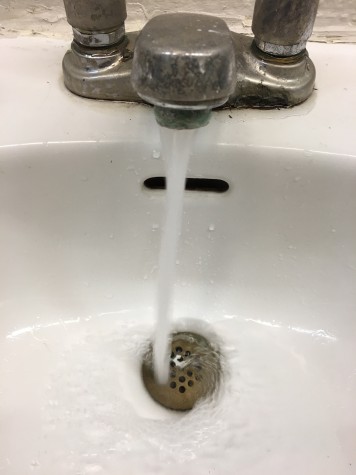
By MIKE MORRIS
(THE PICKET) – While Flint, Michigan, has recently gotten the lion’s share of the press around impurities in local water supplies, Shepherdstown has also recently seen some concern over its water.
The town recently reported above-average levels of a chemical produced by Potomac River water’s reaction with chlorine gas in the local water supply. According to Charles Coe, assistant chief operator of the town’s water department, trihalomethane, the chemical in question, is a byproduct of the water from the Potomac reacting with the chlorine used in the disinfecting process. The chemical is not dangerous to humans in low levels, but is a suspected cancer risk in high levels.
The levels of trihalomethane were measured at 93 parts per billion gallons of water, 13 parts above the maximum acceptable level. A mailing sent out to local residents warned “some people who drink water containing total trihalomethanes over the maximum contaminant level may have an increased risk of getting cancer.”
In the mailing, the town reiterated that the trihalomethanes are not cause for panic. “You do not need to use an alternative water supply… This is not an immediate risk. If it had been, you would have been notified immediately.”
Hagerstown has also seen an impurity problem recently, with 98 parts per billion gallons reported in the Washington County seat’s water supply per a 2014 report.
Coe asserted that the problem facing Shepherdstown’s water supply is not abnormal, and is just a byproduct of the way the Potomac River’s water is comprised. He notes that there are often advanced levels of disinfectant byproduct in the fourth quarter of the year, and that this has happened before. He also said that though the fourth quarter of this year was abnormal, the previous three were at acceptable levels. Summer sees algae blooms, Coe explained, and then when plants start to die in the fall, the water sees a rise in organics, which then reacts with the cleaning agent to cause a yearly rise in trihalomethanes.
Coe also enumerated ways the town is working to modernize and purify its water supply. He said the town plans to build a new water treatment plant, which will cost about $10 million, and a dedicated fill line from the plant to the water tanks outside of town. The new treatment plant has been put on hold until a solution to the problem of disinfectants causing contamination is found. The fill line project is currently being considered. In the meantime, he said, the town will use a clearwell aeration system for the next few quarters, taking water from a well and exposing it to air to get rid of the contaminants. If that does not work, it will begin to blend river water with water from Town Run, and if the water is still not acceptably pure, ammonia will be used to get rid of the chlorine that was causing the byproducts and impurities.
